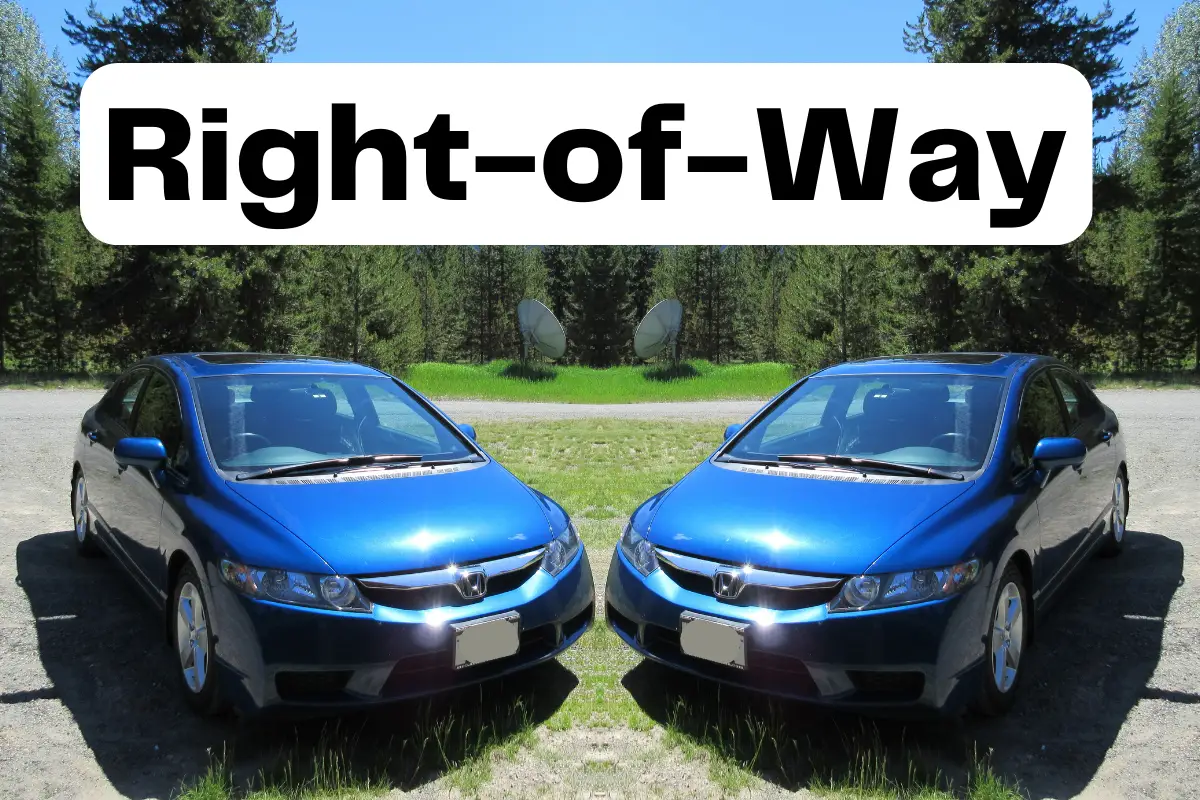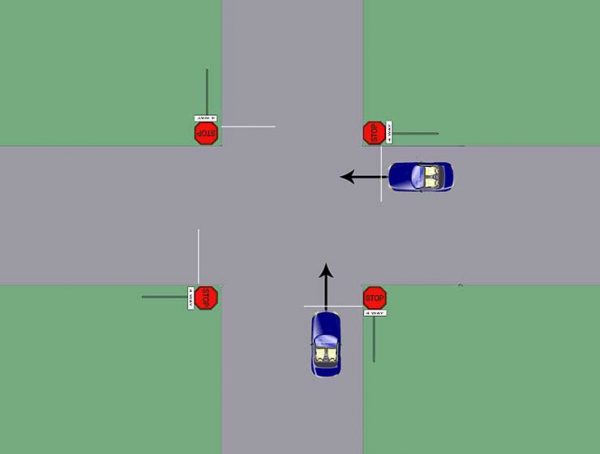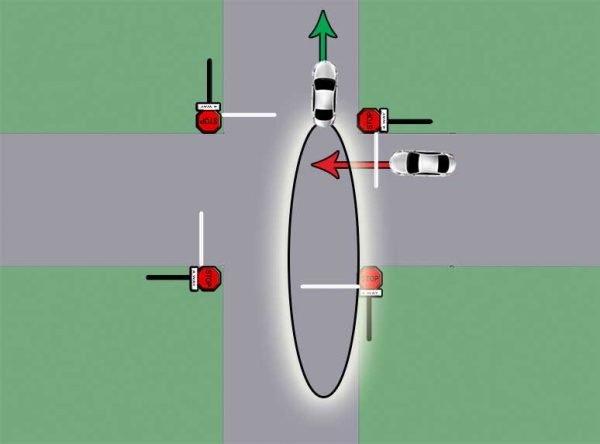What does it mean to have the right-of-way?
Whenever someone says “right-of-way” they are usually talking about some type of understanding that drivers have with regard to which road user is going to go first before another in a driving situation. In other words, who must yield to who whenever two or more road users would like to enter the same space at the same time.
Someone needs to go first. Otherwise, two or more road users entering the same space at the same time is equal to a collision. For a related article, check out Right-of-way in the parking lot.
No one really “has” the right-of-way – an attitude shift
Nobody really “has the right-of-way.” The driving school where I learned how to become a driving instructor would have absolutely, positively fired me if I ever started teaching drivers that they simply “had the right of way.”
This is not just some geeky language technicality, but an important attitude shift, purposefully in place to prevent crashes.
Rather than thinking someone “has the right of way,” it’s more accurate – when you think about it – that certain road users should yield to others; they’re merely supposed to. It doesn’t mean they’re actually going to yield. Driving is dangerous, and we utilize this kind of attitude to greatly reduce risk.
Admittedly, someone has to give the right-of-way, and someone else has to take it. Otherwise, no one would get where they were going, and on every corner would be a Mexican standoff, forever. The trick to safe driving is to know when to give, but also when to take the right-of-way with confidence.
Right-of-way is “that space at that time”
Technically speaking, right-of-way is literally equal to “that space at that time.” If one driver yields to another, then the other has been given the right to safely use that particular space on the road at that particular moment in time.
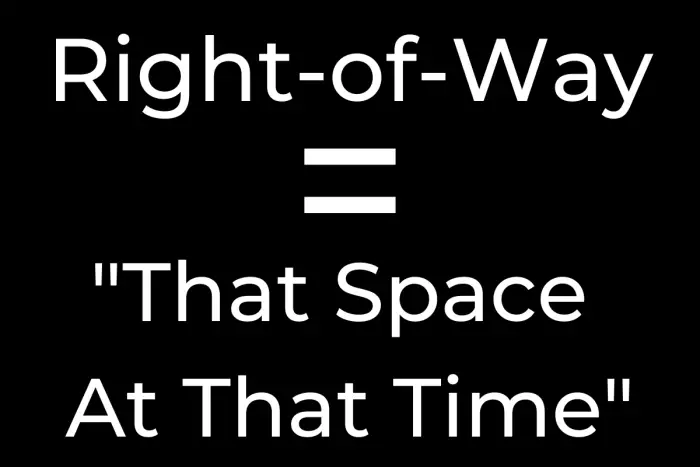
Yield to whoever was there first
One good thing to realize about driving right-of-way is that no matter what kind of traffic control device there is – or isn’t – at any particular location, and no matter what is “supposed to happen,” drivers must legally yield to any other road user that has entered any space before they did. If he/she/it/they got there before you, yield.
Right of Way in the Motor Vehicle Act
The British Columbia Motor Vehicle Act, contains many references to the phrase “right-of-way,” but the majority of them are related to intersections that are controlled by traffic lights. They basically specify who goes first in various situations. Generally speaking, pedestrians are given priority over all other vehicles. This is true as long as the pedestrian is following the pedestrian rules properly.
Right-of-way at 2-way stop intersections
When you’re driving on a through street, coming up to a typical two way stop sign, neither you or the driver facing you has a stop sign. Both vehicles must yield to pedestrians and cyclists first and foremost.
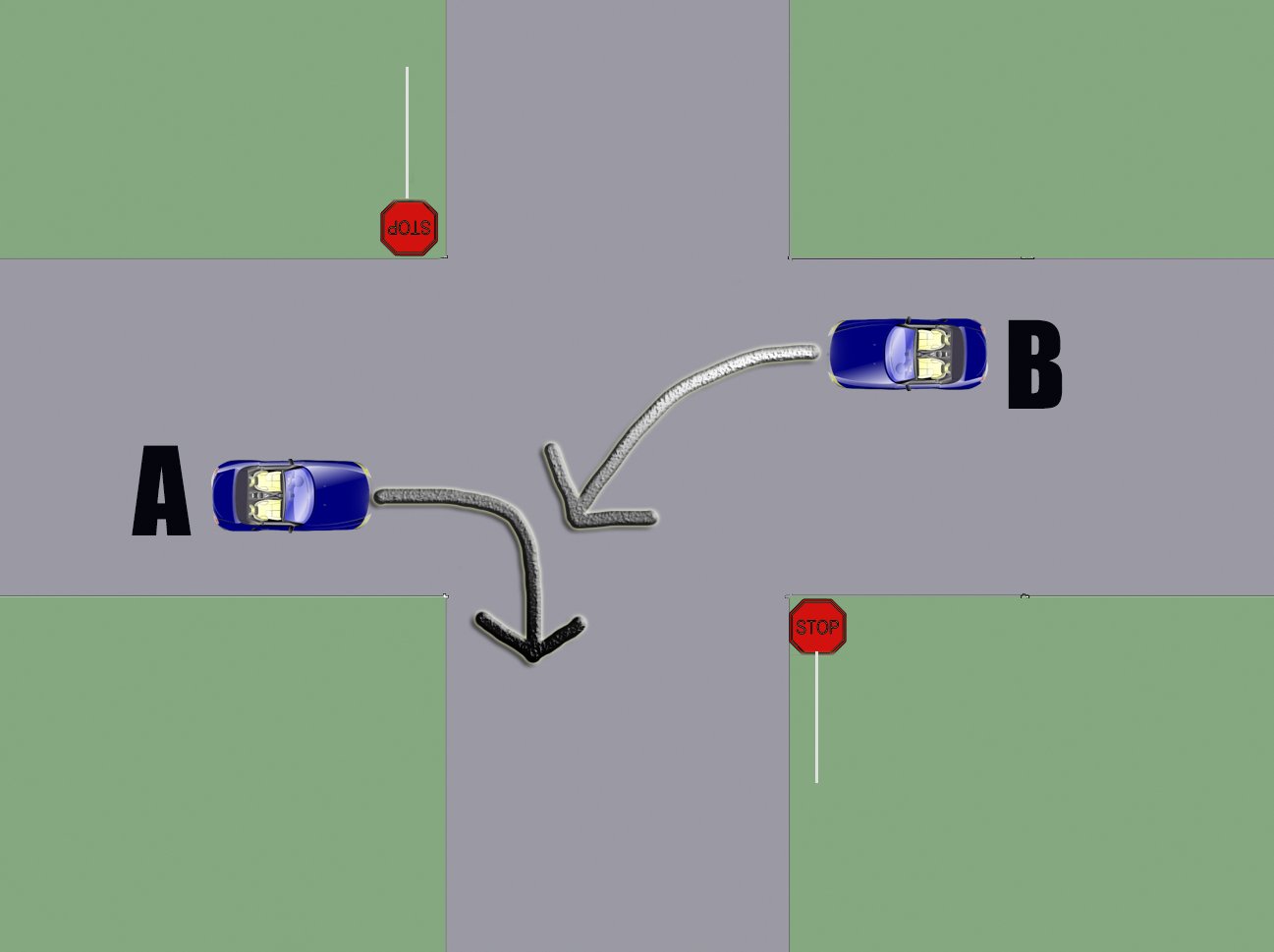
2 Way Stop Rules
Who has the right of way at a 2 way stop in Canada?
- Drivers facing a 2-way stop sign must stop their vehicle completely and first yield to any pedestrians and traffic on the through street, and may only proceed when safe
- If two vehicles arrive at the same time, drivers must yield the right-of-way to whichever vehicle completely stopped and then entered the intersection first
- If two vehicles stop at the same time, drivers turning left should yield to drivers planning to continue straight through
Right-of-way: Traffic light turns
For the typical traffic light, let’s say it’s a green traffic light.
- Right-turning and left-turning drivers must yield to pedestrians
- Left-turning drivers must yield to right-turning drivers

4-Way Stops Right-of-way
- Whoever stopped first, should go first (if safe)
- If you stopped second, go second
- If you stop at the same time, yield to the right
- If you stop at the same time, the left turn yields to the right turn, and the left turn yields to straight through
- Check out my full guide to 4-way stops
Vehicles exiting lane/driveway/parking lot
Any vehicle exiting a lane, driveway, or parking lot are legally required to stop completely and yield to pedestrians and all other road users before proceeding, just the same as a stop sign. To learn more, check out our blog Emerging from a Lane, Driveway, or Parking Lot.
What is a through street?
According to the Act, “through highway” means a highway or part of a highway at the entrances to which stop signs are erected under this Act;
Generally, when people say through street it means a street along which the traffic “has the right-of-way” over vehicles entering or crossing at intersections.

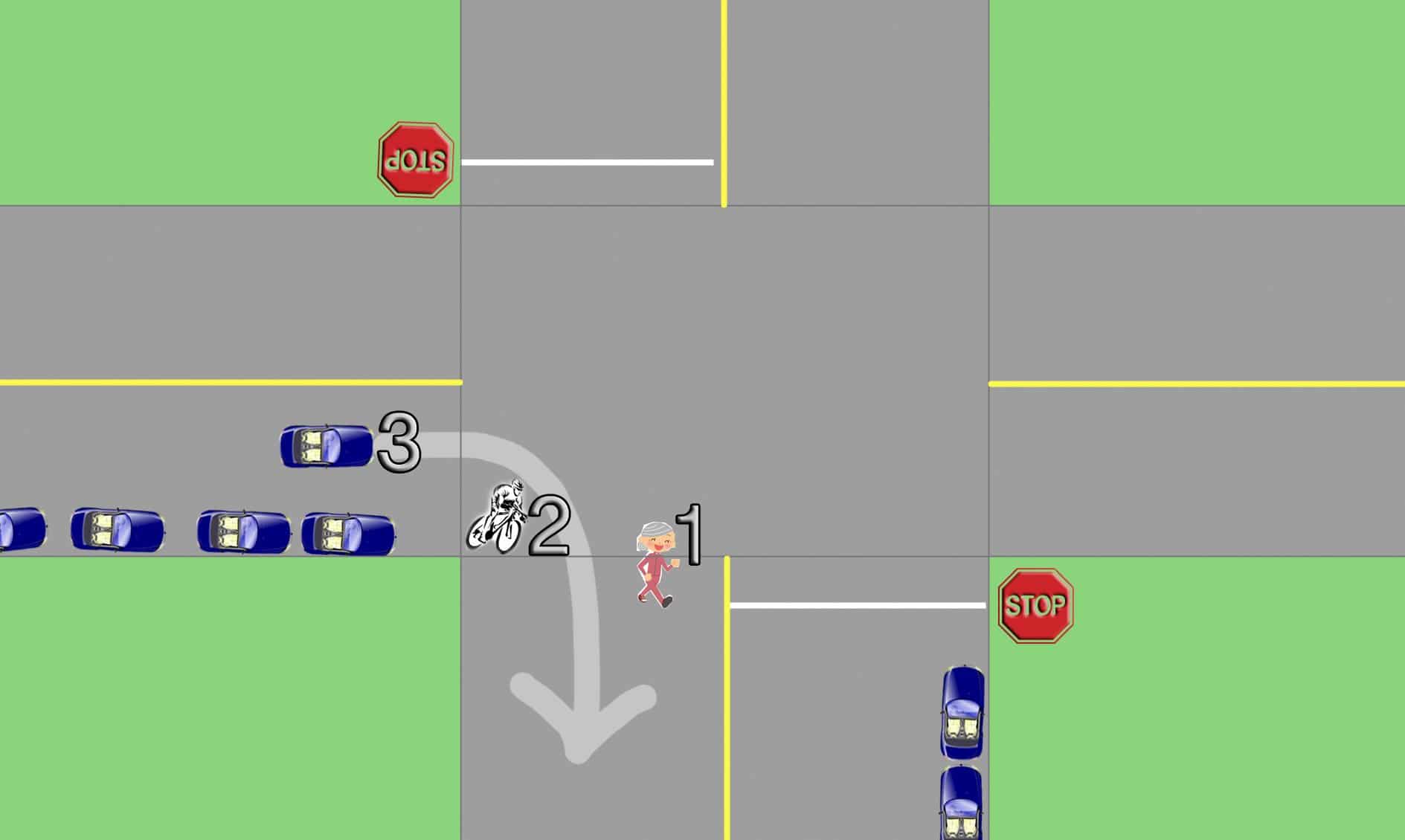
Why do we yield to the right and not the left?
If we yield to the right, it clears the intersection faster than if we yield to the left.
In many circumstances, you do not need to wait until the other car is gone into the far distance, disappearing over the horizon, and the dust settling on the ground before you start to roll; you should start rolling when the other vehicle is pretty much out of your way.
This is all based on the idea that the point of driving is to get somewhere, and clearing intersections in the most efficient manner possible would benefit everyone.
If Car A goes first (the car on the “Right”), then Car B can start rolling when Car A is about halfway through the intersection:
If Car B went first (the car on the “Left”), then Car A would have to wait until Car B got across the entire intersection, remaining fully stopped, and then could proceed. This would take longer (especially when the roads are very wide).
